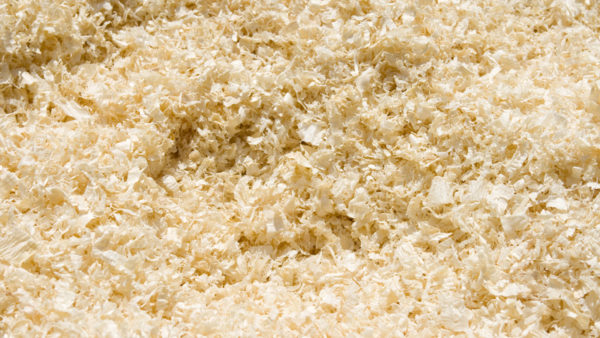1 April 2014
Because we’re producing more greenhouse gases than ever and are unlikely to stop any time soon, we have no choice but to put geoengineering on the table, a Harvard professor argues. Rod Sweet reports.
If we really wanted to tackle climate change, we could use special aircraft to inject particles of sulfuric acid into the upper atmosphere to envelope the earth with a vast sunshade.
The particles would bounce a bit of the sun’s relentless energy back into space, increase the productivity of some ecosystems and give us all a break from global warming.
This isn’t science fiction. Nor, despite the date, is it a spoof.
It’s a serious proposal and part of a provocative plea for us to consider geoengineering as a means to combat the effects of climate change contained in a recent book by David Keith, professor of applied physics in the School of Engineering and Applied Sciences at Harvard University.
The risks of global warming were again brought into sharp focus yesterday with the release of a major report by the UN’s Intergovernmental Panel on Climate Change (IPCC), which concluded that the impacts are likely to be “severe, pervasive and irreversible”.
But adaptation to climate change, as opposed to the cutting of greenhouse gases, featured in the discussion in a way it hasn’t before following IPCC reports.
Geoengineering is all about applying huge, eye-catching solutions to our huge, intractable problems, but David Keith maintains that the sulfuric acid idea is technically easy, and cheap – it would cost about as much as it takes to make a Hollywood film.
And, by partially blocking the sun, it would cool us down.
An occasional advisor to Microsoft founder Bill Gates on climate change, Keith anticipates gasps of horror.
“I don’t advocate such a quick-and-dirty start to climate engineering,” he writes. For one thing, it might solve one problem but it could also create others. It’s also a “brutally ugly technical fix” that plays to our “gadget-obsessed” culture.
And, because it’s so easy to do, any country could take the initiative without the consent of the rest, leading, in the worst case, to war. So potent are the effects of geoengineering, says Keith, who is also Professor of Public Policy at the Harvard Kennedy School, that it may require new forms of global governance.
It all may prove, he says, “as disruptive to the political order of the 21st century as nuclear weapons were for the 20th.”
Plenty of reasons not to touch it with a barge pole, then?
Quite the opposite, says Keith. In his book, “A Case for Climate Engineering” (MIT Press, October 2013), he lays out why we should move “with deliberate haste” towards it.

Planet Earth photographed from the Apollo 11 spacecraft during its first lunar landing mission (NASA)
His premise is that we’ve made no progress in reducing carbon emissions. In fact, the juggernaut of the global economic system is causing emissions to accelerate. Therefore, we have no choice but to put climate engineering on the table and consider it responsibly.
Geoengineering is not an easy way out, he says: to ensure long-term climate stability we must cut emissions as fast and as deep as possible.
But greenhouse gases are building up much faster than the earth can reabsorb them and, once they’re there, the damage will have been done.
For instance, if humanity were to carry off the miracle of halting carbon emissions completely between now and 2030, it would have, he says, “surprisingly little” effect on the warming effects in 2030, because of all the carbon pumped into the atmosphere in the previous century.
In light of this, he says, geoengineering is necessary for coping with the inevitable effects of climate change.
Sulfuric sunshade
Returning to his geoengineering example, to be effective the sulfuric acid needs to be in tiny watery droplets, in width one thousandth of a human hair, deposited in the stratosphere 20km up. The sulfuric acid is needed to keep the water from evaporating.
We don’t yet have the aircraft or the dispersal equipment to do it, but Keith is confident that the aerospace industry could manage both in a few years.
Only one or two aircraft – retrofitted Gulfstream jets, perhaps – would be needed to start the program by depositing 25,000 tonnes of sulfuric acid.
But because warming will increase, the sulfuric sunshade would need to grow to counter its effect, so after 10 years we’d need around 10 planes dispersing the required 250,000 tonnes of solution. In the meantime, the droplets will sink so they need constant replenishing.
By this point Keith imagines more efficient, purpose-built aircraft sowing sulfur from two airfields all over the globe, at a cost of between $300m and $700m per year.
He acknowledges the risks. Sulfate aerosols would likely damage the ozone layer, and when the particles sink they will add to air pollution. All the same, Keith believes they could cut the average rate of global warming in half for the next 50 years.
Risky and crazy is how this sounds, and Keith admits it. Furthermore, if humanity were faced right now with a simple choice between total commitment to geoengineering on one hand and ruling it out completely on the other, he says he’d vote for ruling it out.
But that’s not the choice we face, he says. Instead the choice is between a status quo featuring very little organised research into geoengineering on one hand, and a commitment to serious research and consideration on the other.
“Given this choice, I choose research,” he writes, “and if the research supports geoengineering’s early promises, I would then choose gradual deployment.”










